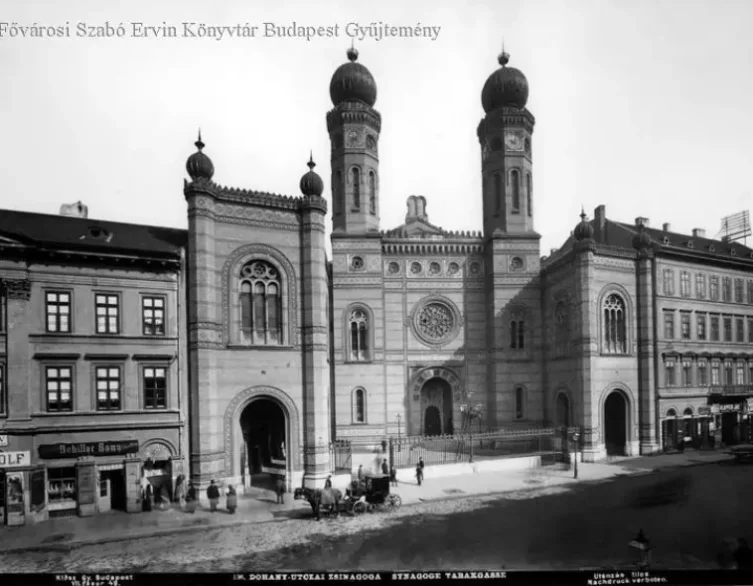Dohány Street Synagogue Turned 165 Years Old

The Dohány Street Synagogue, a true gem of Jewish religious life in Hungary, is celebrating its 165th birthday! Can you believe it? This architectural masterpiece, designed by Austrian architect Ludwig Förster and Hungarian architect Frigyes Feszl, was inaugurated on September 6, 1859. It’s not just any synagogue – it’s the largest one in Europe and a major tourist attraction in Budapest.
The story of its construction is quite fascinating. The Jewish community in Pest had been growing rapidly, and they were eager to have their own synagogue built as early as the 1840s. It took some time to acquire the land, but once they did, they launched a competition for the design. The most prominent architects of the time, including József Hild and Frigyes Feszl, participated, but ultimately, it was Ludwig Förster’s plans that were accepted.
The construction work was divided into three main parts: masonry, iron structure, and various specialized and decorative works. Due to various reasons, the masonry and iron structure didn’t progress at the desired pace, so the temple wasn’t roofed by the end of 1855 as planned, but a year later, in the autumn of 1856.
In the fall of 1857, conflicts arose between Ludwig Förster and the Pest Jewish community. Förster claimed that he had to do much more design work than negotiated, partly because the client demanded a much richer design than they had contracted for, and partly due to the significant delays and the time-consuming, complicated management of the temple building committee. The community remained adamant, and although Förster did not withdraw, the client terminated his further involvement in a letter dated November 15, 1857.
This is when Frigyes Feszl stepped in. He redesigned the ark, giving it a completely new form, then shaped the sanctuary and designed its furnishings. The furnishings in the sanctuary, from the cast-iron railing of the mizrah platform to the two huge 12-branch candelabras and the smaller, more modest candlesticks, were all designed by Feszl. The most significant piece from an artistic point of view is the cantor’s pulpit (sulchan), donated by Ignác Putschin S., which can be transformed into a pulpit with the push of a button using a clever mechanism he invented. Finally, the entire painting of the temple was also done according to Feszl’s design.
Best deals of Budapest
Stylistically, the Dohány Street Synagogue fits into two trends: the romantic architecture with its semi-circular, sometimes slightly oriental variation, popular throughout Europe, especially in Central Europe at the time, and the strongly oriental, historicizing synagogue architecture that emerged from the middle of the century.
In addition to these architectural qualities, the temple has an overall spiritual and cultural significance, playing a fundamental role in the emancipation process and the modernizing cult. The construction of this very large, architecturally significant temple by the then most important Jewish community in Hungary, which also represented a significant presence in the cityscape, was the first grand manifestation of the emancipation process embodied in a building, and this was before 1867, when emancipation was legally secured.
This reflects both the strong aspirations of the Jews for this and the slow transformation of the general perception that made it possible. The other aspect, the pursuit of a modernizing, Neolog cult, and the role of the Dohány Street Temple as a national model in this, is also related to the emancipation and integration efforts of the Jews.
So, as we celebrate the 165th anniversary of this magnificent synagogue, let’s appreciate not only its architectural beauty but also its profound spiritual and cultural significance. Happy birthday, Dohány Street Synagogue!
Image source: MAZSIHISZ



















